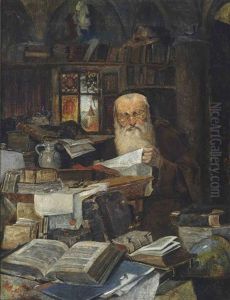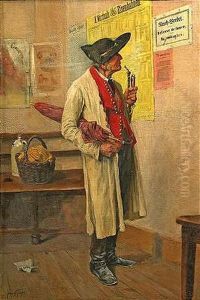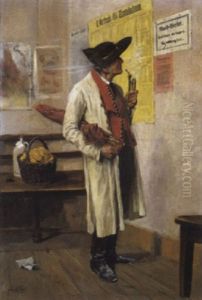Julius Fehr Paintings
Julius Fehr was a notable Swiss painter and graphic artist born in 1860 in Switzerland and passed away in 1940. His work significantly contributed to the art scene in Switzerland and beyond during the late 19th and early 20th centuries. Fehr's artistic journey began at a young age, showing an early inclination towards drawing and painting. He pursued his passion for art by studying at various prestigious art institutions, which helped him refine his skills and develop a distinctive style.
Fehr's artistic output was diverse, encompassing a wide range of subjects, including landscapes, portraits, and genre scenes. He was particularly admired for his ability to capture the essence of his subjects with a delicate and sensitive touch. His landscapes often depicted the Swiss countryside, capturing its unique light and atmosphere with a nuanced palette and meticulous attention to detail. These works not only demonstrated his technical skill but also his profound love and appreciation for his homeland's natural beauty.
Throughout his career, Julius Fehr participated in numerous exhibitions, both in Switzerland and internationally, gaining recognition and accolades for his work. His contributions to Swiss art were not limited to his own creations; he was also a respected teacher, sharing his knowledge and passion with the next generation of artists. Fehr's legacy is preserved in the collections of various Swiss museums, where his works continue to be admired by art enthusiasts and scholars alike.
Though Julius Fehr may not be as widely known internationally as some of his contemporaries, his work remains a significant part of the Swiss artistic heritage. His dedication to capturing the subtleties of light and landscape in his paintings has left a lasting impression on the art world, ensuring his place in the annals of Swiss art history.



